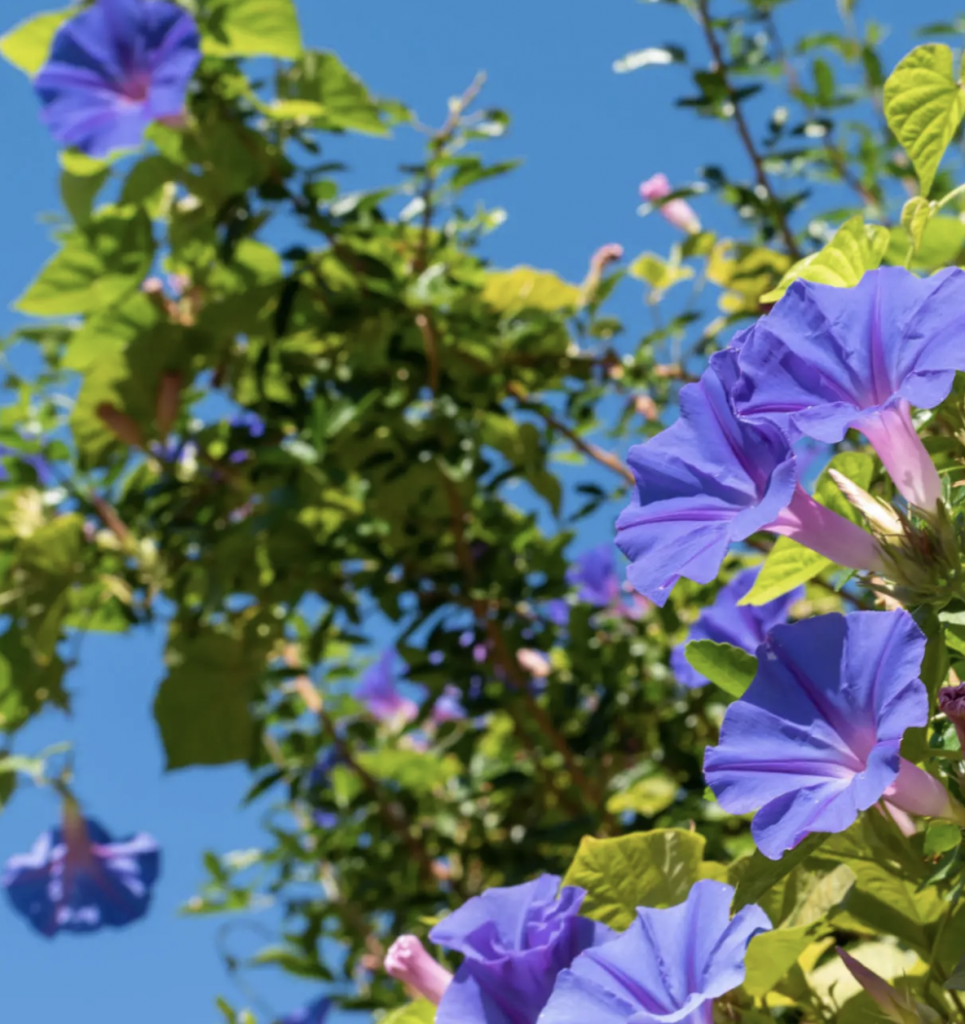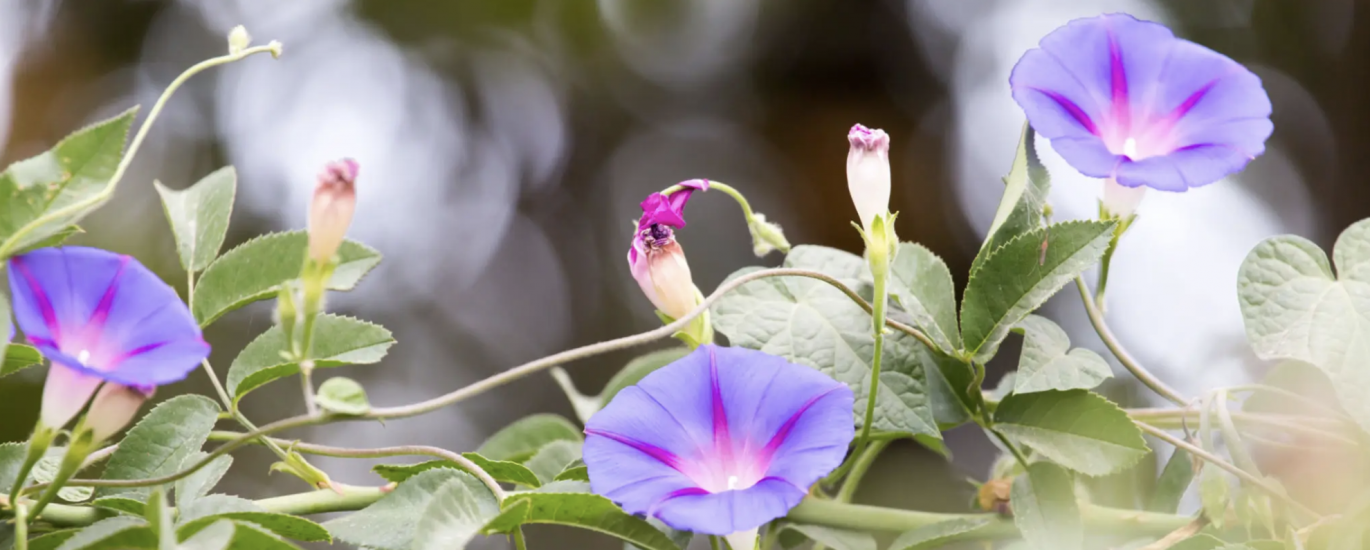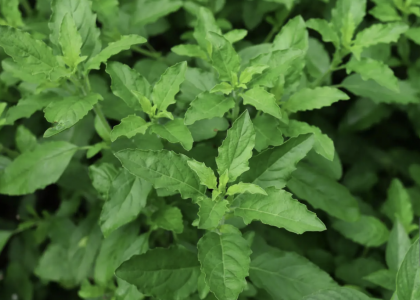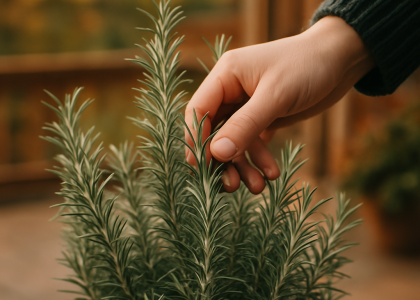Big, bold, and full of sunshine—morning glories are more than just a symbol of summer. They’re a gift to your garden, your kitchen, and your soul.
What Are Morning Glories?
Common names: Morning Glory, Bindweed, Heavenly Blue
Botanical name: Ipomoea purpurea
Plant family: Convolvulaceae (same as sweet potatoes and other morning glories)
Morning glories are known for their fast growth, heart-shaped leaves, and spectacular blooms. With flowers in shades of purple, blue, pink, and white, they are a perfect choice for adding color and life to any garden. These vines are ideal for both beginner and seasoned gardeners alike.

What Do Morning Glories Look Like?
- Flowers: Funnel-shaped blooms that open in the morning and close by the afternoon, with vibrant hues of purple, blue, pink, or white. Their trumpet-like petals are a delightful addition to any garden.
- Leaves: Heart-shaped with a slightly glossy texture, providing a beautiful backdrop for the flowers.
- Vines: Known for their rapid growth, morning glories can climb fences, trellises, and arbors, quickly covering spaces with lush greenery.
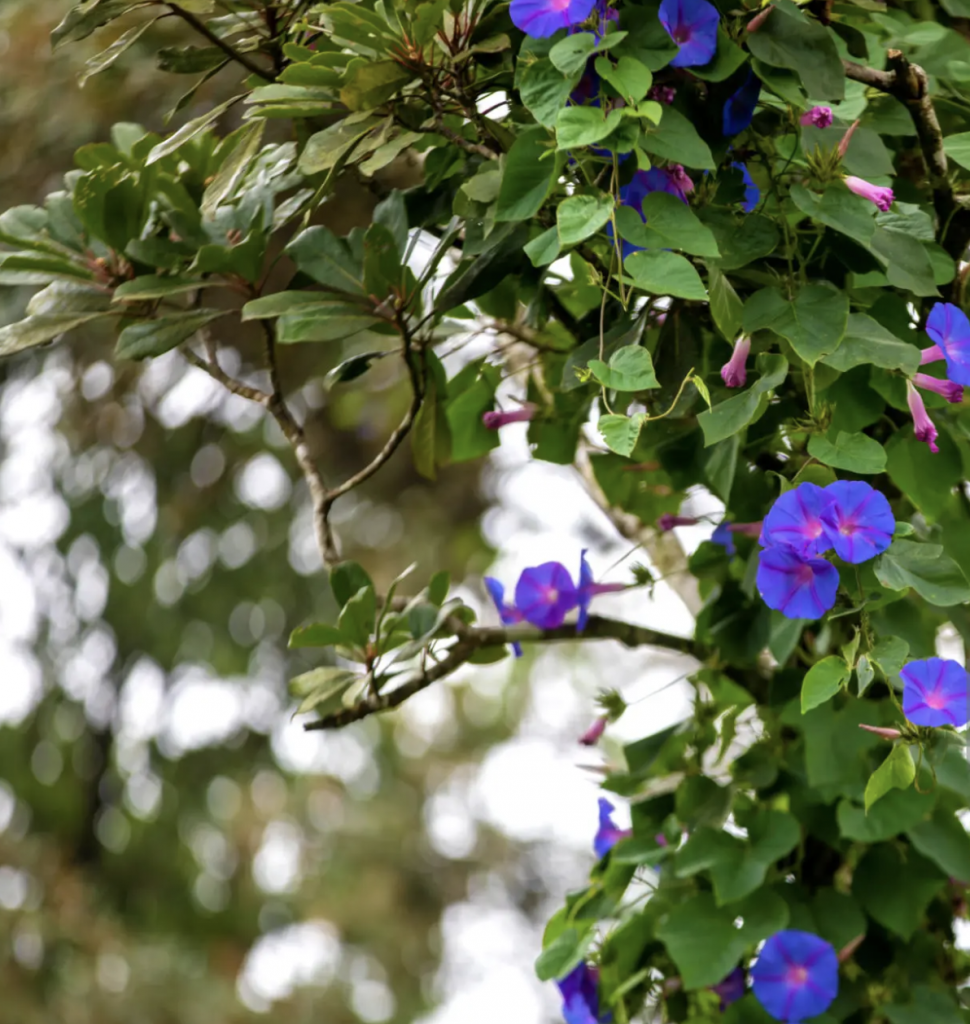
The Benefits of Morning Glories in Your Garden
Ornamental Uses:
- Vertical accents: Morning glories make an excellent choice for trellises, fences, and arches.
- Quick ground cover: Use them to shade soil, cover bare patches, or create a soft garden edge.
- Living privacy wall: Perfect for creating a natural barrier on patios or decks.
Eco & Pollinator Friendly:
- Attracts bees, butterflies, and hummingbirds—a beautiful way to encourage pollinators into your garden.
- Helps control erosion on slopes by providing ground cover.
Culinary & Herbal Uses:
- Morning glory flowers are edible in small amounts and can be used to garnish salads or desserts.
- Leaves are sometimes used in traditional herbal remedies (always consult a healthcare professional before use).
Note: While morning glory is typically not consumed in large quantities, some cultures use it in folk medicine to ease digestion or calm the nerves. Always be cautious and consult an expert.
Looking to brighten your garden with fast-growing vines? One of the most rewarding choices is morning glory propagation—a process that’s surprisingly easy, even for beginners. Whether you're curious about how to grow morning glories from seed or looking to expand your garden through cuttings, this beautiful climber adapts well to most sunny locations. Not only do morning glory vines add vertical charm, but they also create a continuous bloom cycle when planted thoughtfully throughout spring. Here’s how to make them thrive from day one.
How to Propagate Morning Glories: A Professional Gardening Guide
Propagating morning glories is straightforward, whether you choose seeds or cuttings. Follow this expert guide for best results:
Propagation from Seeds
Step-by-Step Instructions:
- Seed Preparation:
- Begin by soaking your morning glory seeds in warm water overnight. This softens their tough outer shell and speeds up germination significantly.
- Sowing Seeds:
- Sow seeds indoors about 4-6 weeks before the expected last frost. Use seed trays filled with quality, well-draining seed-starting mix.
- Plant seeds about ¼ inch deep and gently cover with soil.
- Germination:
- Keep the soil moist but not waterlogged. Germination typically occurs within 7-10 days in consistently warm soil temperatures (around 70–85°F / 21–29°C).
- Transplanting:
- After all risk of frost has passed, gradually acclimate the seedlings to outdoor conditions over a week.
- Transplant seedlings into your garden or container, ensuring they have full sun exposure and well-draining soil.
Propagation from Cuttings
Step-by-Step Instructions:
- Selecting and Preparing Cuttings:
- In early to mid-spring, select a healthy vine section approximately 4 inches long.
- Remove lower leaves to prevent decay, leaving only the uppermost leaves.
- Dip the cut end into a rooting hormone powder to encourage faster, stronger root growth.
- Rooting Process:
- Place your prepared cutting in a container of clean water or directly into moist, well-drained potting mix.
- Ensure consistent moisture and indirect sunlight. Roots typically develop within 10–14 days.
- Transplanting Rooted Cuttings:
- Once roots reach about 2–3 inches long, transplant your cuttings into the garden or larger containers with rich, loamy soil and adequate drainage.
Pro Tip for Continuous Blooms
- To enjoy prolonged blooming periods, stagger your seed plantings every 2–3 weeks during spring. This method ensures continuous flowering throughout the growing season.
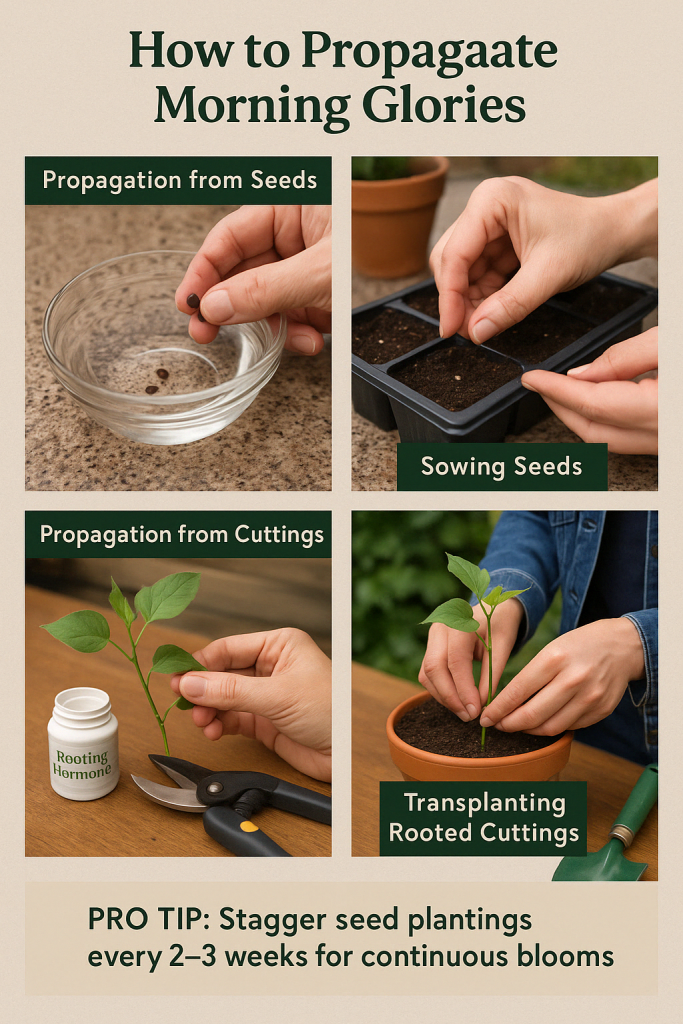
How to Use Morning Glories to Beautify Your Space
Morning glories are perfect for adding color, life, and height to your garden. Here are a few creative ways to use them:
- Climbing vines: Let them grow up trellises, fences, or arches for a stunning vertical display.
- Hanging baskets: Plant them in baskets or containers for a cascading effect over balconies or porches.
- Window boxes: Brighten up your windows with morning glories spilling over the edges.
- Flower crowns: Use their soft blooms for DIY projects, like making a flower crown or wreath.
- Pressed flower bookmarks: Create lasting keepsakes by pressing the vibrant flowers between the pages of a book.

Popular Morning Glory Varieties to Try
| Variety Name | Flower Color | Growth Habit | Highlights |
| Ipomoea purpurea | Purple, pink, blue | Climbing vine | Popular variety, vibrant blooms |
| Ipomoea tricolor | Sky blue, white center | Climbing vine | Classic morning glory with large, striking flowers |
| Ipomoea nil | Pink, red, purple | Climbing vine | Unique patterns and vibrant hues |
FAQ: Your Morning Glory Questions Answered
Q: Can I grow morning glories in containers?
A: Yes! Use a large pot or hanging basket with strong support for vertical growth.
Q: How can I stop morning glories from spreading too much?
A: Regularly prune the vines, and keep them in a confined space like a container or trellis.
Q: Are morning glories toxic to pets?
A: Yes, the seeds can be toxic to pets, so avoid letting them chew on the plants.
Q: How do I get my morning glories to bloom more?
A: Provide them with plenty of sunlight, regular watering, and occasional fertilizing with a phosphorus-rich fertilizer.
Final Thought: The Joy of Growing Morning Glories
Morning glories are more than just a flower—they’re a celebration of life, growth, and beauty. With their stunning colors and quick-growing nature, they’re perfect for adding charm to any garden, patio, or balcony. Whether you’re looking to attract pollinators, create privacy, or simply enjoy their beauty, morning glories are the perfect choice for any gardener.
Gardening Tip: Morning glories thrive on love and attention. Give them space to grow, and they will reward you with vibrant blooms season after season.
